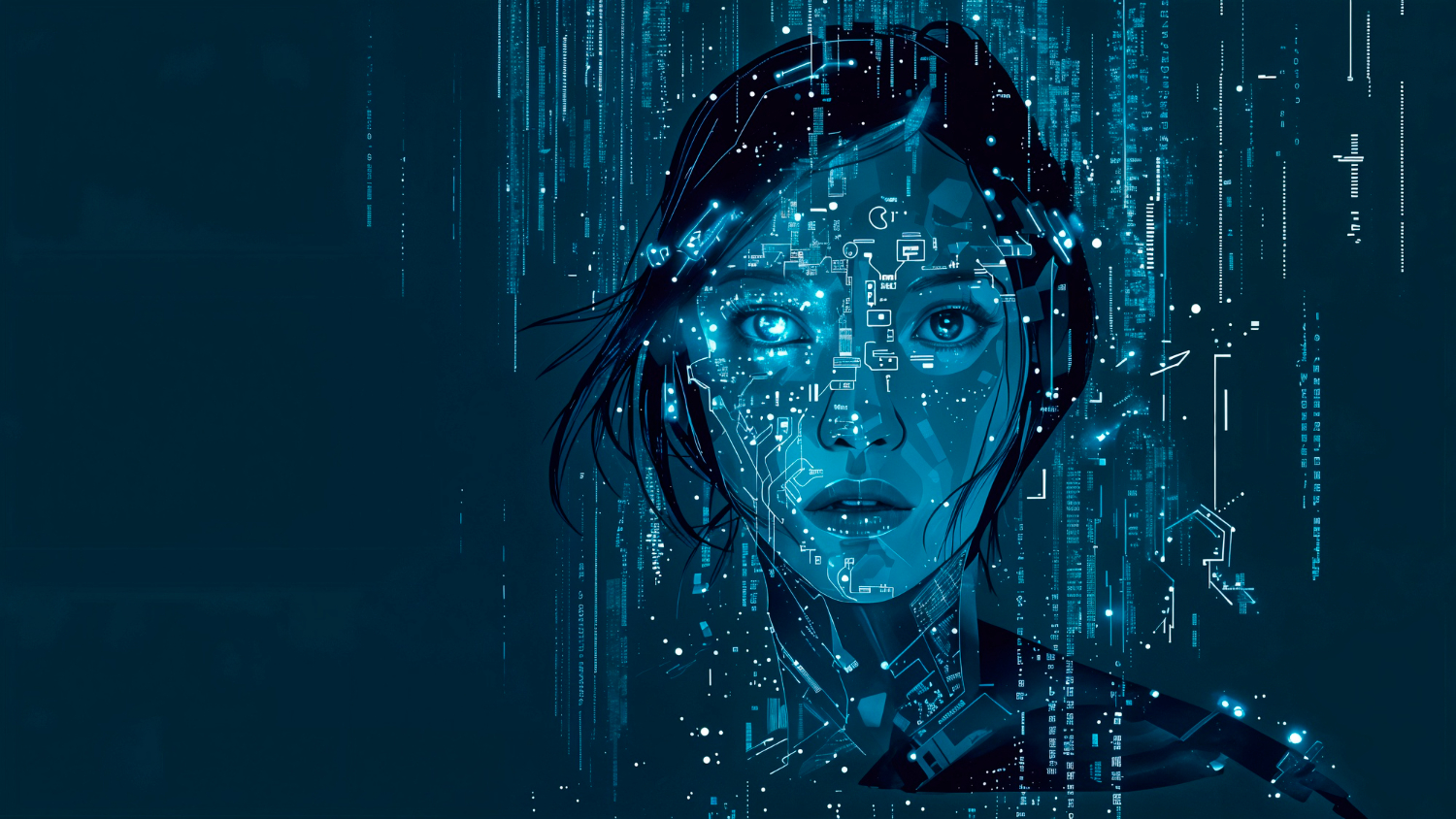What is Computer Vision in AI?
Computer vision is a fundamental aspect of Artificial Intelligence (AI) that allows machines to interpret and process visual information from the world. It’s what enables computers to “see” and understand images, videos, and other visual data. By mimicking human vision, computer vision helps machines perform a wide range of tasks.
From driving cars to facial recognition, computer vision is at the heart of many AI applications today. The ability of machines to process and make sense of visual inputs has grown rapidly, thanks to advances in deep learning models and the increasing availability of large data sets. These technologies allow computers to “learn” how to recognise objects, faces, and even complex patterns.
How Does Computer Vision Work?
Computer vision works by analysing visual data, often using a convolutional neural network (CNN). This type of learning algorithm is designed to process images in a way similar to how the human brain works. CNNs can detect patterns in images, such as edges, shapes, and textures, and then recognise them as specific objects. This is a crucial step in applications like object detection and image recognition.
For example, driving cars use computer vision to detect obstacles, recognise traffic signs, and even “see” pedestrians. The system captures an image or video in real-time, processes it, and makes decisions based on the visual data. This rapid processing is made possible by powerful computing power and advances in deep learning.
Applications of Computer Vision
There are countless applications of computer vision in today’s world. Here are some of the most impactful ones:
-
Autonomous Vehicles: Self-driving cars rely heavily on computer vision to navigate roads safely. The technology allows vehicles to “see” the environment and make decisions based on visual data. Autonomous vehicles use object detection to avoid collisions, recognise road signs, and identify lanes. They can process vast amounts of visual inputs in real-time, making them safer and more reliable over time. Read more on AI for Autonomous Vehicles: Redefining Transportation
-
Facial Recognition: Facial recognition is another critical application of computer vision. It has become a common feature in smartphones, security systems, and social media platforms. By analysing facial features, computer vision systems can match a person’s face to a database, providing accurate identification in real-time. This technology has advanced due to improvements in pattern recognition and deep neural networks.
-
Healthcare: In the medical field, computer vision assists in analysing medical images such as X-rays, MRIs, and CT scans. This helps doctors identify diseases, detect anomalies, and make more informed diagnoses. The use of image processing in healthcare is growing, providing faster and more accurate results. AI models trained on large data sets of medical images can now detect even the smallest details that may go unnoticed by the human eye.
-
Retail and Security: Retail businesses are using computer vision for inventory management, analysing customer behaviour, and even enhancing in-store experiences. Similarly, security systems use computer vision to monitor public spaces, detect unusual activity, and identify potential threats. In both cases, computer vision helps improve efficiency and safety.
-
Social Media: On platforms like Instagram and Facebook, computer vision helps filter and organise content. It can tag photos, recognise objects, and even suggest filters. Pattern recognition in visual data makes it easier for users to find content they are interested in. This has a significant impact on how social media platforms function and improve user experience.
Importance of Real-Time Image Processing
One of the key advantages of computer vision is its ability to process visual data in real-time. This means that systems can respond immediately to changing visual inputs, which is critical in fields like autonomous vehicles and healthcare. For instance, in driving cars, the ability to make split-second decisions can prevent accidents. In healthcare, real-time image analysis can speed up diagnoses and treatments.
Real-time processing requires significant computing power, and advances in hardware and deep learning models have made this possible. As technology continues to improve, computer vision systems will become even faster and more accurate, further expanding their applications.
How Computer Vision is Changing Industries
The impact of computer vision is felt across many industries. From autonomous vehicles to security systems, the ability to process and understand visual data has transformed how businesses operate.
In Retail
Retailers are increasingly using computer vision to monitor shelves, manage stock, and analyse customer preferences. Cameras equipped with object recognition can track items in real-time, alerting staff when supplies are low. This reduces waste and improves inventory control.
The AI Innovations Behind Smart Retail
In Healthcare
In healthcare, computer vision has drastically improved patient outcomes. Medical professionals can use this technology to analyse scans and detect early signs of illness. AI-powered systems can assist in performing routine specific tasks, like identifying tumours, with greater accuracy and speed.
The Synergy of AI: Screening & Diagnostics on Steroids!
In Security
In public spaces, computer vision plays a significant role in security and surveillance. Systems equipped with facial recognition and object detection can identify threats quickly, alerting authorities in real-time. This ensures a faster response and enhances public safety.
How TechnoLynx Can Help
At TechnoLynx, we understand the transformative power of computer vision in today’s AI-driven world. Our expertise in AI technologies and deep learning allows us to develop solutions that meet the unique needs of our clients. Whether you’re looking to implement computer vision in real-time surveillance, driving cars, or healthcare, we can help.
We focus on creating tailored solutions that utilise deep neural networks and machine learning models to process visual data efficiently. By working with TechnoLynx, businesses can benefit from cutting-edge image recognition and object detection technologies. We ensure that our systems are reliable, fast, and scalable, making them suitable for a wide range of industries.
Image credits: Freepik













